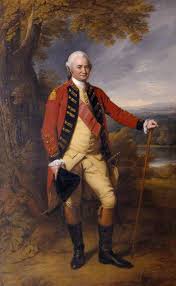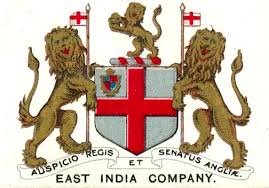As we saw in the previous article, Siraj Ud Daula’s raid on the British factory in June 1756 resulted in a debilitating loss for the East India Company, estimated at 95 Lakh (9.5 Million) rupees- an astronomical sum for that era. The sheer magnitude of the loss goes to show the value of the Company’s possessions in Bengal. It goes without saying, that the East India Company was going to do everything within its powers to regain Calcutta.
The single biggest source of support for the company came in the form of Siraj himself, who was lulled into complacency after the astonishing ease with which he had managed to sack the factory at Calcutta. From fear, his outlook towards the Europeans had changed to one of dismissiveness. In the words of a contemporary
A pair of slippers, said he, is all that is needed to govern them
His delusions would soon be shattered.
The Return of Robert Clive
The Council at Fort St. George in Madras resolved to act. However, the expedition was deferred to the end of September, by which time monsoon would be well behind and there would be greater clarity regarding their position vis-a-vis the French, who still remained a force to reckon with in the south.
One of the leading figures in the Council was Robert Clive, the hero of Arcot in 1751- as we have seen earlier. It owed purely to destiny that Clive now found himself in India. Having returned to England in 1754, he was elected to parliament and served in that capacity for a year, before he was unseated on the petition of his defeated opponent, a certain Richard Hussey. Frustrated at the reversal of fortunes, Clive applied for permission to return to India. The company board willingly obliged, obtaining for him the commission of Lieutenant Colonel in the Royal army and naming him Governor and Commander of Fort St. David (near Cuddalore), with succession to the Governorship of Madras.
And so Clive and fellow Council members at Madras lay in wait, as the month of September approached.

Robert Clive
Recapture of Calcutta
After much deliberation, it was finally decided on 21st September, that the land forces would be led by Clive. By now the general consensus was that the objective of the expedition was not restricted to mere retaking of British possessions in Calcutta, amply evidenced by the contents of a letter dated 13th October 1756 from the Council of Fort St. George addressed to their counterparts in Bengal. Among other things the letter spoke about
…the great advantage which we think it will be…to effect a junction with any powers in…Bengal that may be dissatisfied with the…Nabob’s government…
Clearly, the Council was looking beyond mere repossession of Calcutta or compensation for the losses suffered. As in the south, the company was looking to get involved in local politics, if only to secure its trade.
The first blow was dealt by the resourceful Clive, who captured Calcutta after facing little resistance, following which the company left no doubt as to its intentions. The council drew up what was effectively a declaration of war against the nawab.
Double Games
The nawab Siraj ud Daula, was unable to react immediately, based as he was in Murshidabad. Nevertheless, there wasn’t the least doubt that there would be reprisals from his end. To prepare for the inevitable, the British started fortifications. Possibly to play for time, Clive wrote a letter to the nawab proposing peace.
Siraj, no slouch himself, was already on the March towards Calcutta with his troops when he received the communication from Clive. He answered positively, but continued the March towards Calcutta, keeping all options open. On 2nd February he set up his base within sight of the British fortifications.
And so both parties lay in wait, keeping up the pretense of civility, even as they prepared for battle.

A Daring Raid
The British received a letter from the nawab on 2nd February, desiring them to send their emissaries to Nawabgunj, a small village ten kilometres to the north of the camp (now a small town 25 kilometres north of present day Kolkata). The British complied two days later, sending two representatives. The hostile conduct of Siraj and his courtiers left the emissaries Walsh and Scrafton apprehensive of their safety. The two escaped under the cover of darkness to their camp. Their report left no doubt in Clive’s mind as to the next course of action.
The following morning (5th February 1757), Clive led an attack on the nawab’s camp. Around 3 A.M the British soldiers, under the cover of a dense fog, typical in Eastern India during winter months, made their way towards the camp. When the fog lifted momentarily at 6 o ‘clock, the British found the enemy’s cavalry massed along their flank. The sheer proximity took both sides off-guard.
Fortunately for the British, the fog descended again. With considerable presence of mind, Clive kept his men together despite the fact with with near zero visibility, they had little idea of their exact location. When the fog finally lifted around 8 A.M, the British troops found themselves right in the middle of the enemy camp.
With no possibility of retreat, Clive decided that the only way out was to make a bold stand. Fortunately for the British, Siraj panicked at the sight of the foreign troops and hastily retreated. In the confusion that followed, Clive’s troops benefited immensely from his cohesive leadership against a vastly superior, but rudderless enemy, ending up with just 194 men killed or injured, as against 1,300 of the nawab’s forces.

Siraj ud Daula
Siraj Sues for Peace
As we have seen earlier, Siraj ud Daula was never a popular figure in the power circles of his state. During the course of his march to Calcutta, Siraj had found many soldiers and even some senior officers less than willing to follow him into action. Now, after the unexpected debacle and the hasty retreat, any remaining enthusiasm for a military adventure had been dispelled.
Seeing no other way out, Siraj sued for peace. For safety’s sake, he had already decamped towards the salt lakes further east. Despite pressure from some quarters to pursue and attack the nawab, Clive stood firm. The Council of War supported Clive’s stance. On 9th February, Siraj ud Daula signed a peace treaty, the main terms of which were:
- All privileges granted by the Emperor of Delhi to the British to be confirmed.
- All goods under the British dastak to pass free throughout the nawab’s territories (which included Bengal, Bihar, and Orissa).
- The Company’s Factories and all goods and effects belonging to the Company, its servants or tenants, which had been taken by the Nawab to be restored
- A sum of money to be paid for what had been plundered or pillaged by the Nawab’s people.
- Calcutta to be fortified as the British thought proper.
- The British to have the right to mint coins
Siraj had agreed to a humiliating treaty, but it needed no genius to say that he would take the first available opportunity to wreak vengeance. There were many on the British side too, who pressed for further action even before the ink on which the treaty was written had dried.
Clearly, the treaty was not the end of the war, but merely the calm before the storm.
Aftermath
- The British sacked the French settlement at Chandernagar in March 1757
- The sacking of Chandernagar triggered off a conspiracy to overthrow Siraj (more on that in the next article)
- The sides would renew hostilities in June 1757, at a place called Palashi
Sources
- Robert Orme, A History of the Military Transactions of the British Nation in Indostan from the year 1745, Volume II, The Strand, London (1813)
- S.C. Hill, Bengal in 1756-57, John Murray, London (1905)
- George Bruce Malleson, Rulers of India: Lord Clive, Oxford University Press, 1893

It is strange how a small incident triggers a massive backlash that is still felt after decades have gone by.
True! The events that Siraj ud Daula and Clive set in motion changed the history of several countries. But for India, the British would have never had an empire- that empire was founded on Indian muscle.